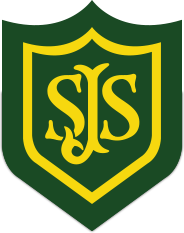Art

Art
Art
At St John’s Highbury Vale CE Primary School, our art curriculum develop curious, confident artists.
Intent
At St John’s, we follow Kapow’s art scheme. We aim to inspire pupils and develop their confidence to experiment and invent their own works of art. This scheme is written by experts in their field and designed to give pupils every opportunity to develop their ability, nurture their talent and interests, express their ideas and thoughts about the world, as well as learning about art and artists across cultures and through history. By following this scheme, we support pupils to meet the National curriculum end of key stage attainment targets. This scheme has been written to fully cover the National Society for Education in Art and Design’s progression competencies.
Implementation
We currently follow the Kapow Art scheme which is designed with five strands that run throughout. These are:
- Generating ideas
- Using sketchbooks
- Making skills, including formal elements (line, shape, tone, texture, pattern, colour)
- Knowledge of artists
- Evaluating and analysing
Units of lessons are sequential, allowing children to build their skills and knowledge, applying them to a range of outcomes. The formal elements, a key part of the National Curriculum, are also woven throughout units. Key skills are revisited again and again with increasing complexity in a spiral curriculum model. This allows pupils to revise and build on their previous learning. Units in each year group are organised into four core areas:
- Drawing
- Painting and mixed-media
- Sculpture and 3D
- Craft and design
Lessons are always practical in nature and encourage experimental and exploratory learning with pupils using sketchbooks to document their ideas. Lessons are adapted to ensure they can be accessed and enjoyed by all pupils and to provide appropriate levels of challenge. Knowledge organisers for each unit support pupils by providing a highly visual record of the key knowledge and techniques learned, encouraging recall of skills processes, key facts and vocabulary.
Teachers often schedule art lessons consecutively to give students ample time to develop, refine, and complete their projects with care and creativity. We currently offer and Art club after school. We run an Art Week every year where we invite artists to inspire our pupils.
Impact
Our curriculum ensures pupils are involved in evaluation, dialogue and decision making about the quality of their outcomes and any next steps. By taking part in regular discussions and decision making processes, pupils not only know facts and key information about art, but they can also talk confidently about their own learning journey and a growing understanding of how they can improve.
Pupil progress is constantly monitored through both formative and summative assessment opportunities to ensure that all pupils achieve to their full potential. Our end of term report cards record whether a pupil is working below, at the expected level, or beyond in art.
As a result, our pupils leave us equipped with a range of creative techniques and the confidence to succeed in their Art and design learning at Key Stage 3 and beyond.
By the end of Key Stage 2, we expect our pupils will:
- Produce creative work, exploring and recording their ideas and experiences.
- Be proficient in drawing, painting, sculpture and other art, craft and design techniques.
- Evaluate and analyse creative works using subject-specific language.
- Know about great artists and the historical and cultural development of their art.
- Meet the end of key stage expectations outlined in the National curriculum for Art and design.

